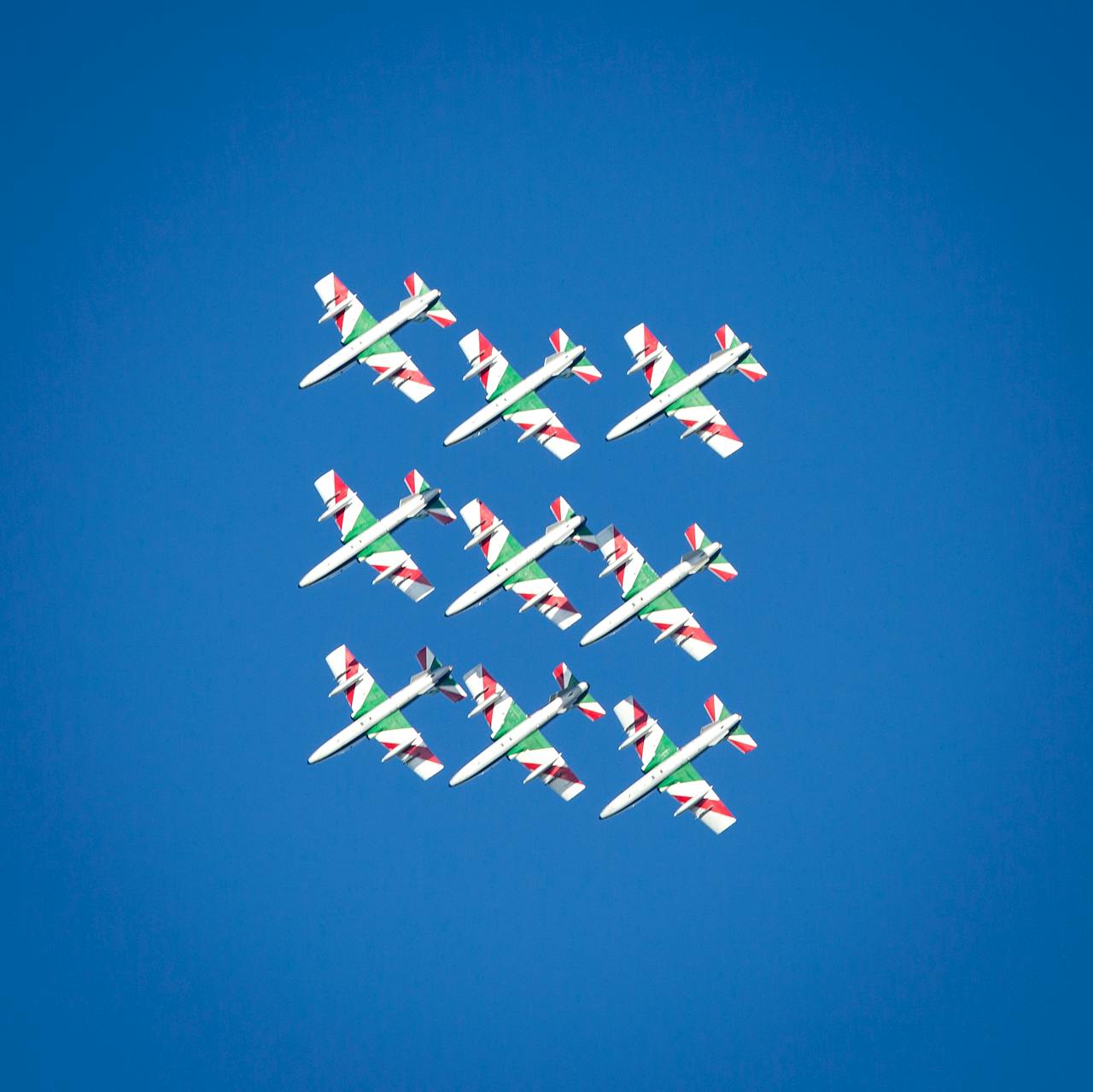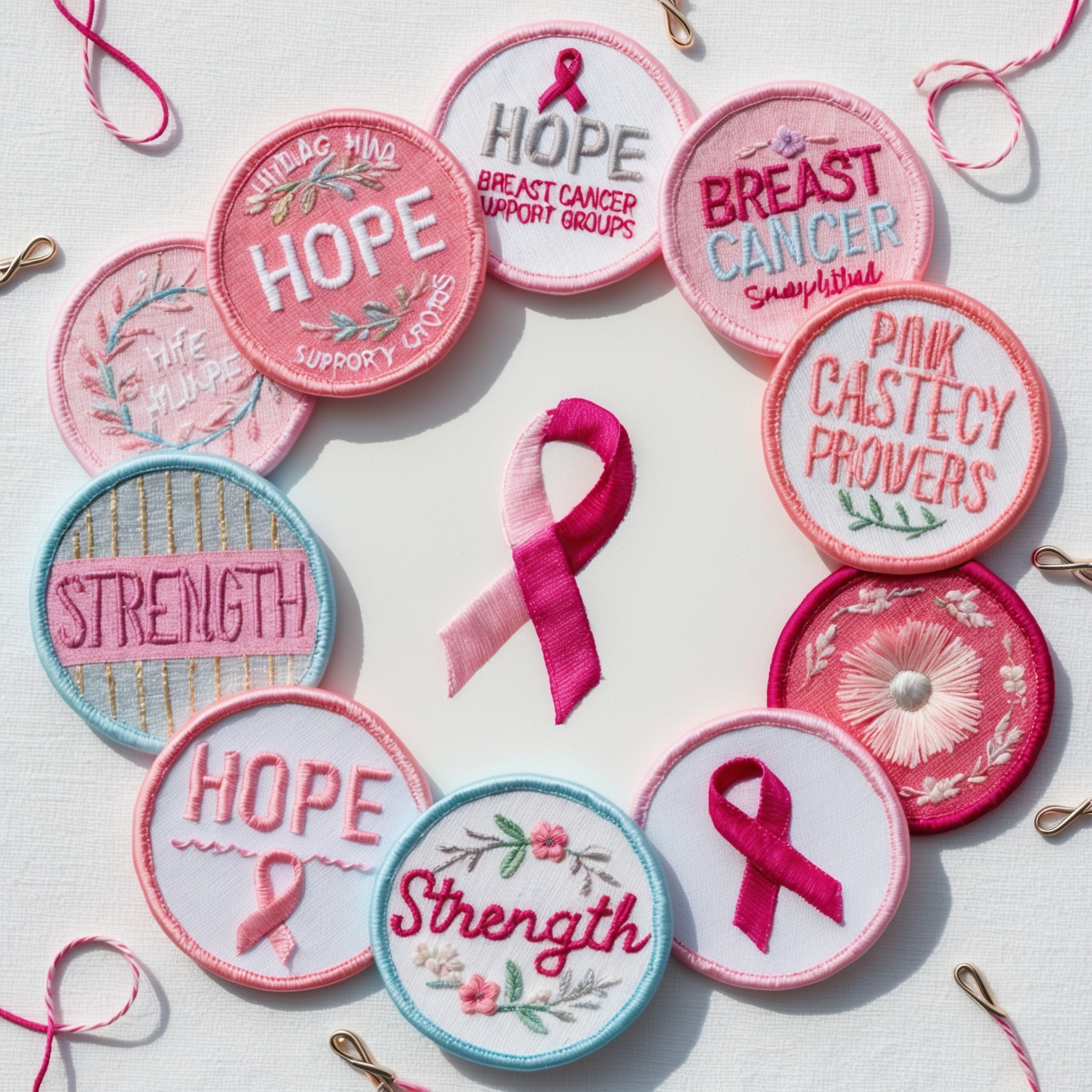In the world of aviation, every milestone is a significant achievement that represents dedication, skill, and a passion for the skies. From the first solo flight to earning advanced certifications, each step in an aviator’s journey is worthy of recognition. Custom patches have long been a staple in the aviation community, serving as symbols of accomplishment, identity, and pride. These patches not only celebrate individual achievements but also foster a sense of belonging within the broader aviation community.
Whether you’re a flight school instructor looking to motivate students, a military unit celebrating its history, or a commercial airline commemorating an anniversary, custom patches offer a versatile and meaningful way to mark aviation milestones. In this article, we’ll explore the significance of custom patches in aviation, their historical roots, and how to design patches that truly soar. We’ll also provide practical tips for creating patches that resonate with aviators and become cherished symbols of their accomplishments.
The Significance of Custom Patches in Aviation
Custom patches hold a special place in the aviation community. They serve as tangible reminders of the hard work, dedication, and milestones achieved by pilots, crew members, and aviation enthusiasts. These patches are more than just decorative items; they carry deep meaning and represent a personal journey through the ranks of aviation.
1. Celebrating Achievements and Milestones
One of the primary roles of custom patches in aviation is to celebrate significant achievements and milestones. Whether it’s a student pilot’s first solo flight, the completion of a difficult certification, or reaching a certain number of flight hours, each accomplishment is a major step in an aviator’s career. Custom patches provide a visible and lasting way to commemorate these achievements.
Examples of Aviation Achievements:
- First Solo Flight: The first solo flight is one of the most memorable moments in a pilot’s journey. Custom patches that commemorate this milestone often feature elements like a single propeller, wings, or the date of the flight.
- Pilot Certifications: Earning certifications such as Private Pilot, Commercial Pilot, or Airline Transport Pilot (ATP) is a significant accomplishment. Custom patches can be designed to represent each certification, incorporating the type of aircraft, the certification level, and other relevant symbols.
- Flight Hours: Reaching milestones in flight hours, such as 100, 500, or 1,000 hours, is a testament to a pilot’s experience and dedication. Custom patches that mark these achievements often include the number of hours, the type of aircraft flown, and the pilot’s name.
2. Building Identity and Camaraderie
Custom patches also play a crucial role in building identity and camaraderie within the aviation community. Whether it’s within a flight school, a military squadron, or a commercial airline, patches help create a sense of belonging and pride. They symbolize the shared experiences and values of the group, fostering a strong sense of unity.
Examples of Group Identity:
- Flight School Patches: Flight schools often design custom patches for their students and instructors. These patches not only represent the school’s identity but also serve as a badge of honor for those who have completed their training.
- Military Aviation Patches: Military units, particularly those in aviation, have a long tradition of wearing custom patches that represent their squadron, mission, and history. These patches often feature unit insignia, aircraft types, and mission symbols.
- Airline Patches: Commercial airlines may design custom patches for their pilots and crew members, celebrating the airline’s history, routes, or special achievements. These patches help create a sense of pride and loyalty among employees.
3. Honoring Heritage and Tradition
Aviation is a field rich in history and tradition. Custom patches often incorporate elements that honor this heritage, connecting today’s aviators with the pioneers and heroes of the past. These patches serve as a reminder of the legacy of aviation and the high standards that current aviators are expected to uphold.
Examples of Heritage and Tradition:
- Vintage Aircraft Patches: Patches that feature vintage or historical aircraft designs pay homage to the early days of aviation. These patches may include images of iconic planes like the Wright Flyer, Spitfire, or B-17 Flying Fortress.
- Historical Squadron Patches: Military squadrons with a long history often design patches that reflect their heritage, including references to significant battles, missions, or aircraft. These patches are a source of pride for squadron members and help preserve the unit’s history.
- Anniversary Patches: Aviation organizations often create custom patches to commemorate significant anniversaries, such as the founding of a flight school, the anniversary of a historic flight, or the centennial of an airline. These patches celebrate the organization’s legacy and its contributions to aviation.
Designing Custom Patches for Aviation Milestones
Designing custom patches for aviation milestones requires careful consideration of the elements that make the patch meaningful and visually appealing. From choosing the right symbols to selecting colors and materials, each aspect of the design plays a crucial role in creating a patch that resonates with aviators and stands the test of time.
1. Incorporate Relevant Symbols and Imagery
One of the most important aspects of designing a custom patch is choosing the right symbols and imagery that reflect the achievement or milestone being celebrated. Aviation patches often feature a variety of symbols that are meaningful to pilots and aviation enthusiasts.
Common Aviation Symbols:
- Wings: Wings are one of the most iconic symbols in aviation, representing flight, freedom, and the pursuit of the skies. They are often used in patches for pilots, crew members, and aviation organizations.
- Propellers and Jet Engines: These symbols represent different types of aircraft and are commonly used in patches that celebrate milestones in flight training, certifications, or military service.
- Aircraft Silhouettes: Including the silhouette of a specific aircraft type, such as a Cessna, F-16, or Boeing 747, can make the patch more personal and relevant to the pilot’s experience.
- Runways and Control Towers: These symbols are often used in patches for air traffic controllers, ground crew, or pilots who have achieved significant milestones in their careers.
By incorporating relevant symbols and imagery, you can create a patch that not only looks great but also holds deep meaning for the recipient.
2. Reflect the Milestone’s Significance
The design of the patch should clearly convey the significance of the milestone being celebrated. Whether it’s a first solo flight, a certification, or an anniversary, the patch should tell the story of the achievement in a way that is immediately recognizable.
Tips for Reflecting Significance:
- Include Dates and Numbers: Adding the date of the achievement or the number of flight hours can make the patch more personal and meaningful. This information serves as a permanent reminder of the milestone.
- Use Specific Text: Including the name of the certification (e.g., “Private Pilot,” “Commercial Pilot”), the type of aircraft flown, or the name of the flight school can add context and significance to the patch.
- Highlight Key Elements: If the milestone involves a specific accomplishment, such as a cross-country flight or a difficult certification, consider highlighting this in the design. For example, a patch for a cross-country flight could include a map or compass.
By focusing on the key elements of the milestone, you can create a patch that truly captures the significance of the achievement.
3. Choose Appropriate Colors and Materials
Color choice is a critical aspect of patch design, as it affects both the patch’s aesthetic appeal and its ability to convey the intended message. The colors used in the patch should align with the theme of the milestone and the identity of the organization.
Color Considerations:
- Blue and White: These colors are often associated with aviation and the sky. Blue represents the open skies and freedom of flight, while white symbolizes clarity and precision.
- Gold and Silver: These colors are commonly used to represent achievement, honor, and excellence. They are often used in patches that celebrate significant milestones or certifications.
- Red and Yellow: These colors can be used to convey energy, excitement, and determination. They are often used in patches that celebrate challenging accomplishments or high-stakes missions.
In addition to color, the materials used in the patch are also important. Common materials include embroidered fabric, woven fabric, and PVC. Each material has its own unique qualities, and the choice of material should be based on the desired look, feel, and durability of the patch.
4. Consider the Patch’s Shape and Size
The shape and size of the patch play a significant role in its overall design and functionality. The patch needs to be large enough to accommodate the design elements but not so large that it becomes cumbersome to wear or display.
Shape and Size Tips:
- Standard Shapes: Circles, squares, rectangles, and shields are common shapes for aviation patches. These shapes are versatile and work well with a variety of designs.
- Custom Shapes: For a more unique design, consider a custom shape that complements the imagery in the patch. For example, a patch celebrating a specific aircraft might be shaped like the aircraft’s silhouette.
- Size Considerations: The size of the patch should be appropriate for its intended use. A patch meant to be worn on a uniform or flight jacket should be smaller and more discreet, while a patch designed for display on a bag or in a frame can be larger.
Choosing the right shape and size ensures that the patch is both visually appealing and practical for aviators to wear or display.
5. Incorporate Personalization
Adding personalized elements to a custom patch can make it even more meaningful to the recipient. Personalization can include the pilot’s name, the specific aircraft flown, or other details that make the patch unique to the individual.
Personalization Ideas:
- Name and Rank: Including the pilot’s name, rank, or call sign adds a personal touch to the patch. This is especially meaningful in military aviation, where call signs and ranks hold special significance.
- Aircraft Tail Number: Adding the tail number of the aircraft flown during the milestone can make the patch more personal and specific to the aviator’s experience.
- Custom Messages: Consider adding a short message or motto that reflects the aviator’s journey or the significance of the milestone. This could be a motivational phrase, a quote, or a personal dedication.
Personalization adds a layer of meaning to the patch, making it a truly unique keepsake for the aviator.
6. Ensure Quality and Durability
Aviation patches are often worn on flight jackets, uniforms, or gear bags, and they need to withstand the wear and tear of everyday use. Ensuring that the patch is made with high-quality materials and craftsmanship is essential for creating a durable and long-lasting keepsake.
Quality Considerations:
- Stitching: High-quality stitching is crucial for the durability of the patch. Embroidered patches with tight, even stitching will hold up better over time and maintain their appearance.
- Materials: Choose materials that are durable and resistant to fading, fraying, and wear. PVC patches, for example, are highly durable and can withstand harsh conditions.
- Attachment Method: The method used to attach the patch is also important for its longevity. Sew-on patches are the most durable, while iron-on patches offer convenience but may not last as long.
By focusing on quality and durability, you can create a patch that will be cherished for years to come.
7. Collaborate with a Professional Designer
Designing a custom patch that is both meaningful and visually appealing requires a blend of creativity and technical expertise. Collaborating with a professional designer who has experience in patch design can help bring your vision to life and ensure that the final product meets your expectations.
Benefits of Professional Design:
- Expertise: A professional designer understands the nuances of patch design, including how to balance text and imagery, choose appropriate colors, and ensure that the design translates well onto fabric.
- Creativity: Designers can offer fresh ideas and creative solutions that you may not have considered, helping to create a patch that stands out and resonates with aviators.
- Technical Knowledge: Designers have the technical knowledge needed to ensure that the patch design works well within the production constraints, resulting in a high-quality final product.
Working with a professional designer ensures that your custom patch is both aesthetically pleasing and technically sound.
8. Consider Sustainability and Ethical Production
As the aviation industry becomes more conscious of environmental and ethical issues, designing custom patches with sustainability in mind can set your organization apart. Choosing eco-friendly materials and working with ethical manufacturers can enhance the appeal of your patches and align with the values of your aviators.
Sustainability Tips:
- Eco-Friendly Materials: Consider using recycled fabrics, organic cotton, or other sustainable materials for your patches. These materials reduce environmental impact and appeal to environmentally conscious aviators.
- Ethical Manufacturing: Work with manufacturers who adhere to fair labor practices and ethical production standards. This ensures that your patches are produced in a way that respects workers’ rights and minimizes environmental harm.
- Minimal Packaging: Reduce waste by opting for minimal or eco-friendly packaging when distributing the patches. This could include using recycled paper tags or biodegradable bags.
By considering sustainability and ethical production, you can create custom patches that not only look good but also feel good to wear and display.
9. Test the Design Before Production
Before committing to a large production run, it’s important to test your patch design to ensure it meets your expectations. Creating a prototype or sample patch allows you to check the quality, colors, and overall look of the design before moving forward with full production.
Testing Tips:
- Order a Sample: Work with your manufacturer to create a sample patch based on your design. This allows you to see how the design translates to fabric and make any necessary adjustments.
- Check for Quality: Examine the sample patch for quality issues, such as uneven stitching, color inaccuracies, or poor material choices. Ensure that the patch meets your standards before proceeding with production.
- Gather Feedback: Share the sample patch with a small group of stakeholders or aviators to gather feedback. This can help you identify any potential improvements and ensure the patch resonates with the target audience.
Testing your patch design before production helps to avoid costly mistakes and ensures that the final product meets your expectations.
10. Celebrate the Milestone with a Meaningful Presentation
The way you present the custom patch to the aviator can enhance its significance and make the moment even more special. Consider creating a memorable presentation that reflects the importance of the milestone and the pride associated with the achievement.
Presentation Ideas:
- Ceremonial Presentation: For significant milestones, consider presenting the patch in a formal ceremony, complete with a certificate, speech, or recognition from peers and mentors.
- Framed Display: Present the patch in a custom frame, along with a photo, certificate, or other memorabilia related to the achievement. This creates a lasting keepsake that the aviator can display with pride.
- Personalized Note: Include a handwritten note or message from an instructor, mentor, or fellow aviator. This personal touch adds emotional value to the patch and reinforces the significance of the milestone.
By celebrating the milestone with a meaningful presentation, you create a lasting memory that the aviator will cherish along with the custom patch.
Custom Patches That Soar with Pride
Custom patches are more than just fabric and thread; they are powerful symbols of achievement, identity, and tradition in the aviation community. From flight school to the highest levels of professional aviation, these patches mark the milestones that define an aviator’s journey and serve as lasting reminders of their dedication to the skies.
By carefully considering the design elements, from relevant symbols and colors to personalization and quality, you can create custom patches that resonate with aviators and become cherished keepsakes. Whether you’re designing patches for a flight school, military unit, or commercial airline, the key to a memorable patch lies in thoughtful design, attention to detail, and a deep understanding of what makes each aviation milestone special.
As you embark on the journey of designing custom patches for aviation milestones, remember that these patches are not just about celebrating the past—they are also about inspiring the future. By honoring the achievements of today’s aviators, you help to inspire the next generation to reach for the skies and continue the proud tradition of aviation excellence.
If you are interested in ordering some high-quality custom patches, feel free to call us at 877-912-6407 or fill out a FREE quote here.




